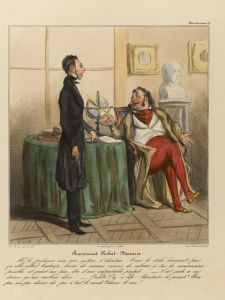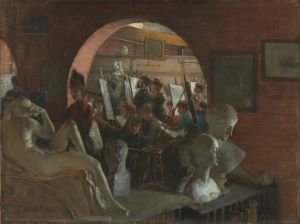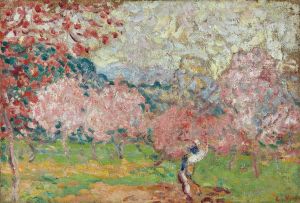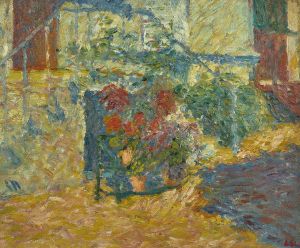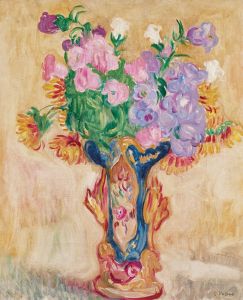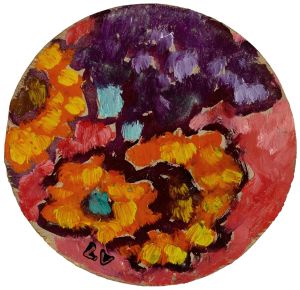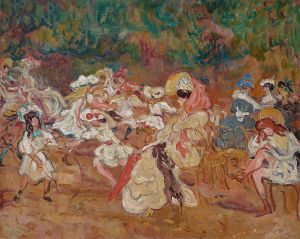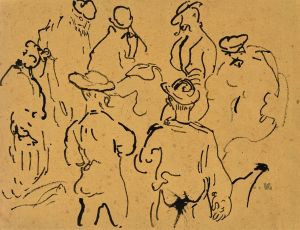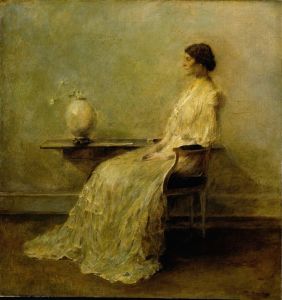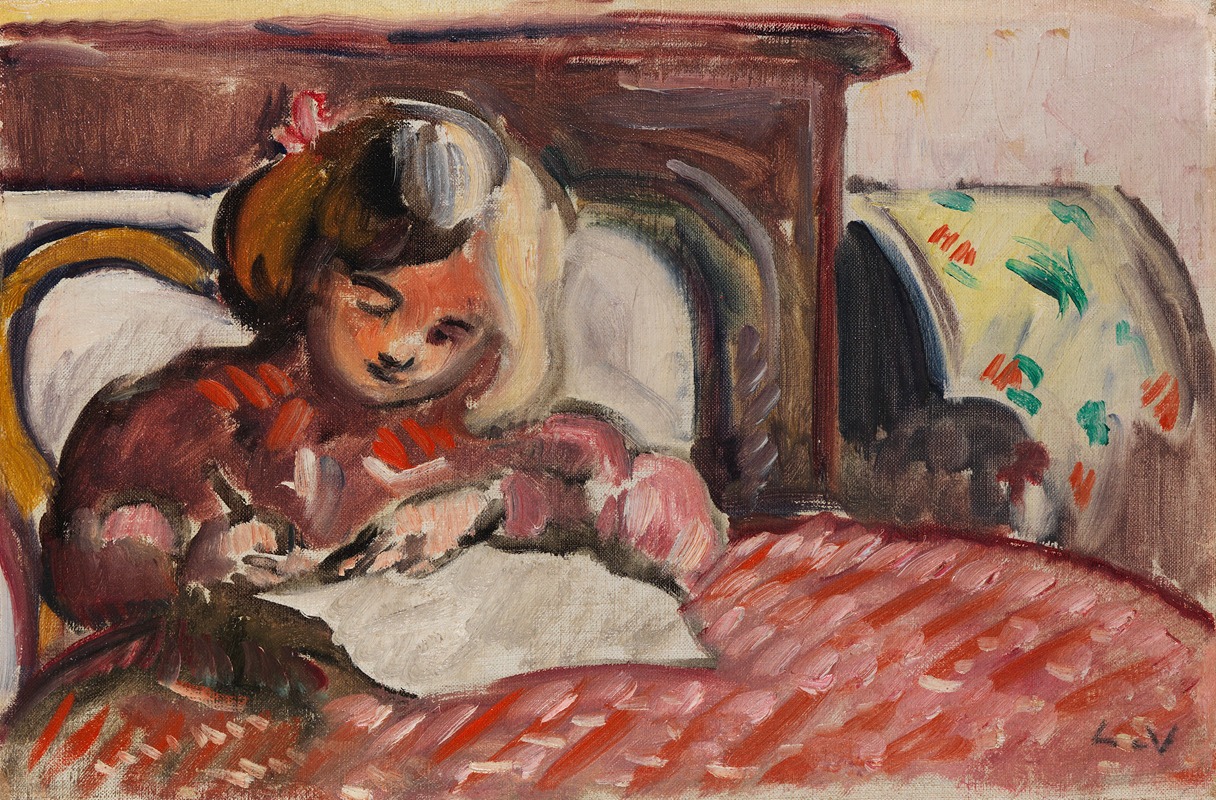
Enfant écrivant
A hand-painted replica of Louis Valtat’s masterpiece Enfant écrivant, meticulously crafted by professional artists to capture the true essence of the original. Each piece is created with museum-quality canvas and rare mineral pigments, carefully painted by experienced artists with delicate brushstrokes and rich, layered colors to perfectly recreate the texture of the original artwork. Unlike machine-printed reproductions, this hand-painted version brings the painting to life, infused with the artist’s emotions and skill in every stroke. Whether for personal collection or home decoration, it instantly elevates the artistic atmosphere of any space.
Louis Valtat (1869-1952) was a French painter associated with the Fauvist movement, known for his vibrant use of color and bold brushwork. One of his notable works is "Enfant écrivant" (Child Writing), which exemplifies his unique style and artistic approach.
"Enfant écrivant" is a painting that captures a moment of quiet concentration, depicting a child engrossed in the act of writing. The composition is simple yet evocative, focusing on the child's figure and the activity at hand. Valtat's use of color is particularly striking in this piece, with a palette that includes rich, warm tones and contrasting hues that bring the scene to life.
Valtat's technique in "Enfant écrivant" showcases his skillful application of paint and his ability to convey texture and depth. The brushstrokes are confident and expressive, contributing to the overall dynamism of the painting. The background is rendered in a way that emphasizes the central figure, with less detail to ensure the viewer's attention remains on the child.
The painting reflects Valtat's interest in everyday scenes and his ability to find beauty in the mundane. This focus on ordinary subjects was a hallmark of his work, setting him apart from some of his contemporaries who often chose more dramatic or exotic themes. Valtat's approach was more intimate and personal, capturing moments of daily life with sensitivity and insight.
"Enfant écrivant" is also notable for its composition. The child is placed slightly off-center, creating a sense of movement and naturalism. The positioning of the child’s body and the angle of the head suggest a moment of deep concentration, inviting the viewer to share in this private, contemplative moment. The simplicity of the scene is enhanced by Valtat's careful attention to detail, such as the texture of the child's clothing and the subtle play of light and shadow.
Louis Valtat was a prolific artist, and his work spans various subjects and styles. However, "Enfant écrivant" remains a significant example of his ability to capture the essence of his subjects with both simplicity and depth. The painting is a testament to Valtat's mastery of color and form, as well as his keen observational skills.
Throughout his career, Valtat exhibited his work in numerous galleries and salons, gaining recognition for his contributions to modern art. His association with the Fauvist movement, alongside artists like Henri Matisse and André Derain, placed him at the forefront of early 20th-century art. Despite this, Valtat maintained a distinctive style that was uniquely his own, characterized by a harmonious blend of color, light, and composition.
"Enfant écrivant" is a fine representation of Valtat's artistic vision and his ability to transform a simple, everyday activity into a work of art that resonates with viewers. The painting continues to be appreciated for its aesthetic qualities and its insight into the quiet moments of life, reflecting Valtat's enduring legacy in the world of art.







